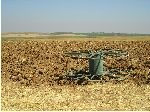SEQUESTER
SEQUESTER
Evaluation of universal patterns of biodiversity and carbon storage responses to land-use change
| |
| |
| |
| |
Human land-use change results in disturbance of landscapes and ecosystems on large areas of the Earth, thus affecting environmental resources and ecosystem services. Human land use is the main factor for loss of biodiversity on a global scale. To date, most effects of land use on plant communities and ecosystem services have been tested under distinct disturbance regimes in a single biogeographical region. Comparing various types of land use under different degrees of intensity across biomes might reveal universal patterns of ecosystem responses that are unknown so far. In this project we will will jointly investigate land-use impacts on plant communities, biodiversity and C storage in Northwest Germany using data from field plots analyzed by a statistical habitat model. The main objective of this project is to find universal patterns of responses to change in land use, and to predict consequences for plant biodiversity and ecosystem C storage across land-use types and biogeographical regions. Verifying a functional relation between sets of biological attributes, environmental resources and land management will allow predicting biodiversity for a wide range of systems and landscapes by knowing land use and resource regimes.
Relationships between C stocks and plant traits, resources and management might also enable us to find the sources for changes in C storage following land-use change, a causal connection that is unknown in most cases. Results from our study will add new insights on the generality of responses of vegetation and C cycling to environmental changes. Finding a relation between C storage and traits, resources and land management would enable us to estimate C inventories from vegetation and land-use mapping, which will improve estimates of current and future C budgets at the national and global scale. The research in the framework of this proposal will be a first step to a more comprehensive analysis of response patterns that in future projects should include a large variety of land-use types, vegetation forms and biomes.



![[Translate to English:]](/f/5/inst/biologie/ag/landeco/intern/logo.gif?v=1413960139)


